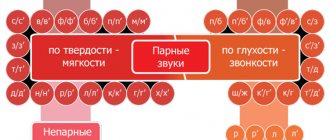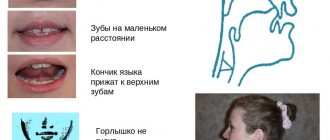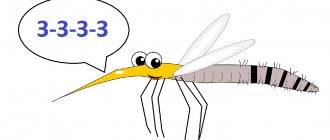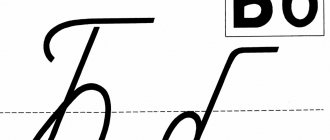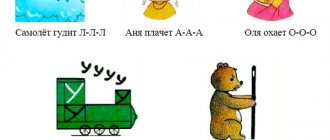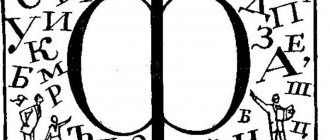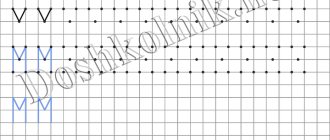Every person's speech consists of sounds. The child’s development depends on how correctly the letters are pronounced. If a child under 5–6 years old makes mistakes in reproducing phonemes, you should seek help from a specialist.
Recently, incorrect pronunciation of the letter D has become increasingly common among children. To eliminate the defect, the sounds “D” and “D” should be produced and automated.
Types of deviations
Characteristics of pronunciation defects:
Consonant voiced
Stun.
the sound “D” at different positions in words turns into
steam room
deaf
I agree
"T". The disorder occurs due to the similarity in the location of the articulatory apparatus during reproduction, poor development of phonemic perception and organic deficiencies of the speech organs. The defect is eliminated again using the phoneme “B”.- Open twang. Replacing the sound
“D” with “N”. The sky curtain is down. The tip of the tongue does not push away from the incisors. There is no push of the air stream from the oral cavity. The air leaves the nasal cavity in a continuous manner. - Clicking "D". Correction is carried out by regulating breathing during pronunciation.
You can check correct reproduction in the form of a small test, suitable for older
groups
of preschoolers
:
- An adult pronounces sentences with frequent letter repetition. For example, Dina blows a trumpet. The child is asked to repeat what he heard.
- Using illustrations of objects with the sounds “D” and “D”. Place the pictures
in front of the child. Ask to name what is depicted on them (oak, house, melon, children, hollow, etc.) - Search for the desired picture. The adult says the name of one depicted object among the presented pictures, and the child finds it and names it.
Such simple tasks are used in preparatory groups
to identify defects in sound pronunciation and to develop the thinking abilities of children. Similar activities are used for all types of phonemes.
Poem about the letter D for preschoolers
The letter D will lead Darina along a long path. And he will bestow wondrous friendship on two girls - Dasha and Dina!
T. Garg
***
The woodpecker is a good bird. The woodpecker loves to work. A woodpecker knocks loudly on a tree and this knock will reach you.
I. Goryunova
***
Do you like poems about the letter D?
Do you want poems about all the letters of the Russian alphabet to always be at your fingertips?
So that you can reinforce the material with your child?
Check out our Mini-Book “Poems about the Alphabet”
It is made in .pdf format, it contains bright pictures from articles on our site in good quality.
The letter D at the bottom of the pond was found by Crayfish. Since then they have had trouble: FIGHTS every now and then.
A. Shibaev
***
House on Ovrazhnaya Street, Twenty-five floors. This is the only house in the world, all the children live in it together.
T. Lavrova
***
A woodpecker was making hollows in an oak tree - The oak tree was hollowing out day after day, I thought there would be houses here for both birds and animals.
E. Vorobyova
***
Good Grandfather Danil, He gave sweets to the children, even to Uncle Vanya, He gave gingerbread.
S. Atilla
***
The trees thought for a long time: What to give to the Oak, after all, it is already two hundred years old, and everyone would like to live like this.
S. Shusharina
LET'S PLAY A GAME?! Quest: MULTIMINIC BOOK
1. Guess the Rebus from the picture in this block.
2. Enter the GUESSED word in the Coupon Code via the LINK and receive the book for free.
3. Find the rest of the Rebuses in other articles on our site to collect the ENTIRE COLLECTION of Mini-Books for FREE!
Causes of pronunciation problems
The occurrence of incorrect reproduction of soft and hard
"D" is accompanied by:
- lack of correct articulation
of the speech organs; - underdevelopment of phonemic hearing (the child does not distinguish sounds from each other);
- repeating the mistakes of others;
- weak motor activity of the lower jaw and other organs of the speech apparatus (occurs with dysarthria).
Note: dysarthria is a violation of the innervation of the speech organs. The deviation appears due to damage to the central nervous system.
It is possible to establish an accurate diagnosis and cause after speech therapy
examinations.
After collecting a detailed history, the speech therapist
prescribes corrective
tasks
. Some classes should be done at home.
Breathing exercises
Most often it is recommended to use gymnastics according to Strelnikova. But it is acceptable for classes with children over 7 years old. And it should be performed under the supervision of adults, preferably a specialist.
1. Exercise “Palms”. Standing straight, bend your elbows, showing your palms to an adult. The hands are clenched into a fist as you inhale, and unclenched as you exhale. Breathing is done through the nose. The task is performed 5 times.
2. Exercise “Epaulettes”. Standing straight, clench your hands into a fist and press them to your belt. Inhale - fists on the floor, gradually unclenching. Exhale - starting position. Execution 5 times.
3. Exercise “Pump”. From the “standing” position, bend forward, arms hanging down. It's like pumping up a tire. When inhaling, bend forward. When exhaling, return to the starting position.
The “Tube” breathing exercise is suitable for children. Pull your lips forward. Inhale through the nose, exhale through the tube. Perform 5 times.
Any breathing exercise must be performed under the supervision of a specialist and only after consultation with a doctor.
Correct articulation for the sounds D and D
When playing the sound “D” the speech apparatus takes the position:
The lips are completely neutral. The production depends on the subsequent vowel phoneme. The distance between the lips and incisors is about 5 mm.- The tip of the tongue rests on the upper jaw. May touch the alveoli behind the upper teeth.
- The soft part of the palate descends.
- The larynx vibrates.
- The vocal folds are closed. Presence of voiceover.
The articulation of the soft “D” differs from the hard one only in the position of the tongue. Its tip falls behind the lower incisors.
Important: Classes aimed at establishing phonemes should be conducted after the child has mastered simple vowels and consonants (a, y, o, i, e, s) and (b b, p p, mm, v v, f f).
Poem about the letter D for children
The house near the letter D is big: Windows, a door and smoke with a chimney!
ATTENTION!
REGISTER FOR COURSES! RECRUITING! More details on the page: https://academy.multi-mama.ru/product/multi-predlozhenie/
I. Krasnikova
***
Letter D - spacious House. It's warm, it's cozy. Toys, dolls and animals live there.
K. Green
***
This melon is like the sun, even if you cover the window, yellow, pot-bellied, rich in joy.
L. Slutskaya
***
It takes a long time for a tree to grow; Right up to the sky. This height is beauty for trees.
A. Mishutin
Exercises for staging
Before you begin to master the phoneme, you should go through the preparatory stage. It consists of performing special articulation and breathing exercises (here). The child must be taught correct articulation (position of the speech organs) and breathing during the pronunciation of an isolated sound.
Articulation gymnastics
The classes are designed to train the organs involved in the pronunciation of the sounds “D” and “D” description
:
- Lower jaw. Open your mouth wide. Use your lower jaw to imitate chewing movements. Perform for 10-15 seconds.
- Lips and cheeks:
- lips are closed, and air should be drawn into the oral cavity. Next, imitate rinsing as after brushing your teeth in the morning;
- use your lips to make characteristic sounds for a horse (snorting);
- pouting lips in turn. First the top, then the bottom.
3. Language:
Exercise "Mushroom"
- "Fungus". Smile widely with your mouth open. The flat tongue is sucked to the palate. In this case, the organ should be located behind the upper incisors. Hold the position for 10-15 seconds.
- "Horse". Click your tongue on the hard palate, imitating the sound of a horse's hooves.
- "Swing". Open your mouth wide, slightly exposing your teeth. Place the tongue behind the upper and lower teeth in turn. Performed 5 times.
4.Soft palate. The baby is asked to reproduce vowel sounds. The pronunciation is soft at first, and then a hard attack is applied.
Advice: to prevent your baby from getting bored with doing the same exercises, you can use classes prescribed for speech therapists. Many options are available on the Internet.
Breathing exercises
Experts suggest performing paradoxical gymnastics according to Strelnikova. But its use is allowed for children 7-8 years old ( grade 1
). Exercises should be performed under the supervision of parents or a specialist. Initial exercises:
- Palms. The child stands up straight. He bends his arms at the elbows and shows his palms to the adult. Hands clench into fists as you inhale and unclench as you exhale. You need to breathe through your nose. Perform the exercise 4 times.
- Shoulder straps. The baby is standing upright. Hands clenched into fists. They are pressed to the belt. While inhaling, hit the floor with your fists. Gradually unclenching your hands. As you exhale, return to the starting position. Do it 4 times.
- Pump. From a level stance, make a slight forward bend. The arms are hanging at the sides. Simulate tire inflation. Lean forward and inhale. As you exhale, return to the bent position.
Important: the technique has many contraindications, so you should consult a pediatrician before performing it.
To train children's breathing, use the “tube” exercise. The lips are pulled forward. Inhale through the nasal cavity, exhale a stream of air using a formed tube. Perform 4-5 times.
Poem about the letter D for 1st grade
A woodpecker is hollowing out a house in an oak tree. It is hammering away at the house with great difficulty. The blackbird was sitting on a tree and playing a pipe.
D. Smiles
***
Household members, brownie, Homebody and housebuilder, Housekeeping, intercom, Straight home marathon.
I. Review
***
A pole, a window, a pair of legs - a real little mansion! We watch, we learn, and then we build the letter D like a house.
S. Rhine
***
Here is the House, Where are Good Friends, Above the House there is Smoke, and in the House there is a Door. We guessed - you and I - What we need to write now.
A. Manfish
***
The blackbird was feeding the blackbirds in the nest, and the woodpecker was hollowing out the tree. The blackbird looked at the woodpecker: “Making holes is your destiny. Don’t gouge the hollow, neighbor, my children are having lunch!”
K. Schott
***
I wandered along the path, I planted an oak tree. Grow up, baby oak tree, grow greener faster, branch! Tomorrow the bird will fly and sit on a branch. Come on, come on, sing, birdie, my little oak friend!
G. Vieru
***
It began to rain and does not go away, rain, rain. It's raining, although it's not raining, it's raining. It hits passers-by in the faces, rain, rain. It will rain for a long, long time. It will pour for hours on end on the roof, on the road. The clouds are talking about this, even though they cannot speak.
A. Barto
***
Animal trainers! Give me some sugar quickly! For a long time the animals taught us so that they would be given awards.
V. Berestov
Staging
It is carried out after the child has mastered the position of the speech organs when reproducing a phoneme. Typically, 2 methods of producing the sound “D” and “D” are used:
. The baby and the adult sit in front of the mirror. A parent or specialist demonstrates the correct pronunciation of the sound. The child is asked to repeat. To make it easier, vowel sounds are used. For hard “D” (da – do – du – dy), and for soft “D” (di – du – de).
Imitation- Mechanical method. The child pronounces the sound “B”. The tongue is between the lips at this time. The speech therapist uses a special spatula to press on the tip of the organ. Then he pushes it behind the upper incisors.
Experts often offer these methods of setting as homework.
. In a familiar environment next to a loved one, the baby will master classes faster.
Important: when performing exercises, point out the distinctive characteristics of the phoneme “D” from “T”. A special feature of the sound “D” is the vibration of the vocal folds. In order for the baby to feel the difference, his hand is placed on the larynx of an adult, who pronounces the letters in turn.
Articulation gymnastics
1. Lower jaw. Open your mouth quite wide and begin chewing movements. Repeat the exercise for 15 seconds.
2. Lips and cheeks.
- close your lips and take air into your mouth. Start by rinsing your mouth, as if brushing your teeth;
- imitate a horse snorting;
- pouting of lips (upper, lower).
3. Language.
- exercise “Mushroom”: wide smile, mouth open. The tongue, in a flat state, is sucked to the palate behind the upper incisors. Hold in this position for 10-15 seconds;
- exercise "Horse". The clicking of the tongue against the roof of the mouth, as if we were making the sound of horse hooves on a stone path;
- exercise "Swing". The mouth is open (wide), teeth are exposed. In turn, the tongue goes behind the lower and then upper teeth. Repeat 5-6 times.
4. Soft palate. Play vowel sounds of the adult's choice.
